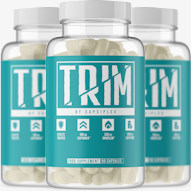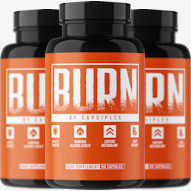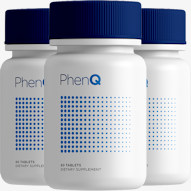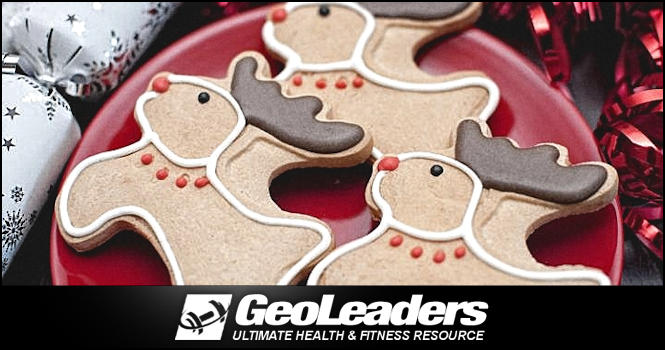Speeding up your metabolic rate is the key to faster and more efficient weight loss. Here’s a list of the best ways to boost your metabolism through diet, supplements, and exercise.

Are you looking for the best ways to boost your metabolism so you can burn calories like you did when you were younger?
Whether your goal is weight loss or just experiencing an elevated level of health and vitality, it’s essential to find the quickest, easiest, and most effective way to speed up your metabolic rate.
But once you start doing research, you’ll see so much information out there that the search for answers becomes a bit complex and overwhelming.
Giving your metabolism an overhaul is actually really simple; it ultimately boils down to making a few changes in your lifestyle.
So let’s take a closer look at a few cool ideas so you can safely and effectively give your metabolism that long-overdue boost that it needs.
Unpacking Metabolism: Beyond Digestion and Energy
Metabolism is a word we often hear in conversations surrounding health and weight loss. But what does it truly signify?
Metabolism refers to the complex interplay of biochemical reactions in your body, governing everything from digesting food to repairing cells.
And it’s this very process that determines how efficiently you burn calories and, subsequently, shed those pesky pounds.
The Weight Loss Puzzle: Beyond Quick Fixes
In a world that thrives on instant gratification, many find themselves ensnared in the quest for a rapid weight loss solution.
Infomercials tout miracle pills and diet fads come and go, and yet, sustainable weight loss remains an elusive goal for many.
The challenge? A majority of these ‘solutions’ miss out on the foundational science of metabolism.
True, sustainable weight loss isn’t just about cutting calories or sweating it out in the gym; it’s about understanding and optimizing the metabolic processes humming beneath our skin.
Understanding Efficiency and Fat Storage
Imagine the human body as a machine – some machines function optimally, burning fuel efficiently, while others might lag, conserving energy and storing surplus as fat.
This difference is largely influenced by metabolic rates, and an array of factors, from genetics to daily habits, can sway this rate.
So, if the secret to effective weight loss is rooted in metabolism, the pressing question becomes: How can one supercharge this internal engine?
Knowledge as Power: What Lies Ahead
In the pursuit of that svelte physique or healthier lifestyle, knowledge is your most potent weapon.
In this article, we’ll dive deep, dissecting the manifold ways – from the power of exercise to the science of supplements – to boost your metabolism and expedite weight loss.
The journey ahead is both enlightening and empowering, as we navigate through evidence-backed strategies, dispelling myths, and unlocking the potential of your body’s metabolic magic.
So, whether you’re a seasoned fitness enthusiast or someone just embarking on their health journey, the revelations ahead promise to reshape the way you perceive weight loss and metabolism.

#1 RATED METABOLISM BOOSTER FOR WOMEN!
Overall Rating: ★★★★★ (5/5) ✔ In Stock
Grab Today’s BEST DEAL And SAVE BIG On Our #1 Best-Rated Metabolism Booster For Women!
Transparency Disclosure: Some of the links in this post are affiliate links. This means we may make a small commission on purchases at no extra cost to our readers.
Exercise: Power Up With Metabolic Magic
When it comes to tapping into the body’s natural energy reservoirs, few things rival the potency of exercise.
Think of it as the switch that activates our metabolic machinery.
Each movement, whether it’s a brisk walk, a set of squats, or a dance class, holds the potential to rev up our metabolism, increasing energy and promoting optimal health.
In this section, we’ll delve deep into the world of exercise, shedding light on how different activities influence our metabolic rates.
Ready to understand the synergy between movement and metabolism? Let’s dive in and explore the transformative power of exercise.
1. Gain More Lean Muscle
Let’s start out with the basics; packing some lean muscle mass on your frame will definitely help to improve your metabolism.
Those muscle cells will need lots of energy to function properly in your normal daily activities and in turn, your body will need to burn up more calories in the process.
When you pack on more muscle to your frame, your metabolism gets fired up, and have to work double-time.
This is because just maintaining a single pound of lean muscle burns three times as many calories as what a pound of fat can burn.
Your muscles need lots of quality calories just for maintenance and repair; meaning that even while they are at rest, they are burning up calories for fuel.
So the bottom line is that the more muscle mass you have, the faster your metabolism will be.
This will end up leading to burning more calories throughout the day, both at rest and during your workouts.
And when your body is burning up all of those calories, you will definitely start to lose body fat while improving your waist-to-hip ratio.
2. High-Intensity Interval Training
A great example of a metabolic-boosting interval workout routine would be to integrate your cardiovascular workout right into your strength training sessions.
What this would essentially do is morph your regular workout into a high-performance interval training session.
This is more commonly known as High-Intensity Interval Training, or HIIT for short.
If you don’t know exactly what this is, then here is a quick and simple summary.
Interval training is when you perform high-intensity exercises for short, rigorous periods and then rest for a brief interval in between.
So as an example, you may sprint for 30 seconds and then walk briskly for 60.
You would then repeat that interval a set number of times and that would be your interval training session.
You could also combine your weight training with intervals.
An example of this would be to perform a weight training exercise such as a standing curl and when you are done with your set, perform mountain climbers for a 30-second interval.
3. Strength Training
In addition to high-intensity interval training, you can also focus on building muscular strength through progressive resistance training.
Building lean muscle mass through resistance training is actually one of the best ways to increase metabolism and start melting your belly fat away.
This type of training will essentially give your body the natural ability to raise your Basal Metabolic Rate (BMR) and burn more calories as you increase your muscle tone and strength.
One thing you must understand about strength training is that your progress won’t always be directly apparent from the beginning.
So be patient as it may take a bit of time to get yourself into the zone and start seeing any visible results.
By slowly introducing a resistance exercise program into your weight loss routine, it will not only make you a lot stronger, but it will also increase your metabolic rate.
When your metabolism naturally increases, it will consequently enable your body to start burning more body fat and ultimately lead to quicker fat loss.
If you don’t currently incorporate any type of weight work into your routine then be sure to start out slow and work your way up.
This will ensure that you remain free from injury and achieve the weight loss success that you are after.
4. Low-Intensity Cardio
Losing weight without any type of exercise is going to be a long uphill battle, which is why working out is essential for weight loss success.
But most people get the wrong idea of what exactly constitutes a beneficial exercise in a fat loss program.
Some people will automatically think that you need to go to the gym for high-intensity cardio and weight training sessions.
Others think that you must run at least five miles and get heavily winded every day in order to get into what is considered a “good” workout.
Although both of these scenarios will work great in a fat-loss routine, there are other more subtle ways in which you can burn calories effectively.
Something simple, like taking a low-intensity evening stroll around your neighborhood or riding your bike down to the local market, can all be part of an effective routine to lose weight fast.
Every little bit of additional exercise that you can add to your routine, no matter how trivial it may seem, all adds up.
And over the course of time, it will all add up to big results!
Nutrition: Fuel Your Fire
Imagine your body as a finely-tuned engine, capable of incredible feats and performances. Just as a car requires premium fuel to run efficiently, your body demands quality nutrition to operate at its peak.
Every morsel you consume acts as a spark, influencing your metabolic rate. Choosing the right foods that boost metabolism can turn that spark into a roaring flame, optimizing energy, accelerating fat burn, and supercharging our overall well-being.
In this section, you’ll discover how you can truly “Fuel Your Fire” with the power of nutrition.
5. Cut Sugar
Sugar, often camouflaged in our favorite treats and beverages, presents a tantalizing allure.
Those delicious sugary snacks and indulgent fast foods? They don’t just tempt your taste buds; they orchestrate a rollercoaster of emotions and energy within your body.
The initial euphoria, often likened to a heady rush, is undeniable. It’s this very spike in energy that makes sugary indulgences so irresistible.
But, as with most rollercoasters, what goes up must come down.
After this fleeting sugar high comes the inevitable crash, draining our energy and leaving us lethargic.
This sudden dip doesn’t just rob us of our enthusiasm but can also deter even the most fitness-enthusiastic among us from lacing up those gym shoes.
Understanding the Sugar Impact
The impact of sugar on our metabolism and overall health is profound. Here’s a quick rundown:
- Energy Fluctuations: Rapid spikes and falls in blood sugar can lead to mood swings, fatigue, and a persistent feeling of exhaustion.
- Weight Gain: Excessive sugar can lead to weight gain, primarily because it can cause increased fat storage in the body.
- Reduced Immunity: High sugar intake can suppress the immune system, making us more susceptible to illnesses.
- Chronic Health Issues: Over time, consistent high sugar consumption can increase the risk of chronic diseases such as diabetes, heart disease, and more.
Strategies to Curb the Sugar Temptation
- Educate Yourself: Familiarize yourself with food labels. Sugar often hides behind various names such as fructose, sucrose, maltose, and more.
- Opt for Natural Sweeteners: Choose honey, maple syrup, or stevia as alternatives to refined sugars.
- Gradual Reduction: Instead of going cold turkey, gradually reduce the sugar in your diet to make the transition easier.
So while the occasional sugary treat is perfectly fine, it’s essential to be mindful of our overall consumption.
By understanding the effects and actively making healthier choices, you can foster a well-balanced relationship between sugar and your body’s well-being.
6. Incorporate Protein into Every Meal
This tip goes hand in hand with point number 1 at the top of this article.
Make sure that you incorporate protein into each of your meals.
Eating protein will help to keep your metabolism burning as it requires a lot more energy to break down and a lot longer time to digest.
The bottom line is that it is a lot harder to break down and digest proteins than both carbohydrates and fats.
And so as a result, you will definitely feel fuller for longer periods of time, making you eat fewer calories throughout the day.
It’s as simple as that.
Moreover, protein is essential in building and maintaining muscle mass.
As you recall at the beginning of this article, the more muscle you have in your body, the more calories will be needed for energy.
But while you need to load up on protein, you still need to have a well-balanced diet; meaning, you need to have enough of a balance in the amounts of carbohydrates and the good Omega-3 fats as well.
An interesting study was conducted in the Netherlands and showed that eating adequate amounts of protein will not only help you lose excess weight but also help you keep that weight off.
The exact amount, as the author stated in the study, is half a gram for every pound of your weight, but some studies have concluded that protein should make up 30% of your total daily calories [1].
Some people may seem to think that this is still too conservative but you need to base your protein intake on your activity level.
7. Eliminate Late Night Meals
Your metabolism slows down as the hours of the day pass, so it only makes sense not to eat for at least five hours before you lay down to go to sleep.
Some experts also recommend not drinking any beverages except water for the last two hours.
During the later part of the day, your digestion systems need downtime to recover.
This might be a tougher habit to break because of the fact that many of us are used to eating throughout the evening while watching television programs or movies.
With some self-discipline, ending your meals early will get easier with time and will definitely have a big impact on your body.
8. Choose Low Glycemic Carbs
Navigating the vast world of carbohydrates can be perplexing. While some carbs can be nutritional landmines, causing energy crashes and weight gain, others can be powerful allies in your metabolic journey.
Here’s the crux of the matter: Not all carbs are created equal. While junk foods, laden with empty calories and minuscule nutritional value, may tantalize the taste buds, they’re counterproductive for anyone aiming to increase metabolism and shed that stubborn belly fat.
Understanding the Glycemic Index
The Glycemic Index (GI) is a valuable tool that measures how quickly a carbohydrate-containing food raises blood sugar levels. Low-glycemic carbs are digested and absorbed more slowly, leading to a gradual rise in blood sugar and insulin levels. This provides longer-lasting energy and keeps hunger pangs at bay.
Benefits of Low-Glycemic Carbs:
- Stable Energy Levels: These carbs provide a steady energy release, ensuring you don’t suffer from the dreaded mid-afternoon slump.
- Reduced Cravings: By preventing sudden blood sugar spikes, they can help reduce cravings for unhealthy snacks.
- Enhanced Fat Burning: Stable insulin levels facilitate better fat metabolism, aiding in weight loss.
Incorporating Wholesome Foods:
To truly improve your metabolism, it’s essential to nourish your body with the right ingredients. Think vibrant, fresh fruits packed with vitamins and fiber. Embrace antioxidant-rich vegetables, which not only fuel your body but also combat oxidative stress.
Complementing these low-glycemic carbs with healthy Omega-3 fats (found in foods like salmon, chia seeds, and walnuts) and lean proteins (like chicken, tofu, and legumes) creates a balanced, nutrient-dense meal that supports optimal metabolic function.
Remember, choosing low-glycemic carbs isn’t just a dietary choice; it’s an investment in sustained energy, healthier body weight, and overall well-being.
9. Eat Smaller More Frequent Meals
Once you have the above tips in order, it’s time to fine-tune that diet a little bit more.
The quickest way to slim down naturally is to simply shoot for five to six smaller meals per day instead of the usual three that most people eat.
This will help to keep your metabolism working overtime and consistently burning up calories throughout the day.
The greatest benefit of this style of eating is the prevention of fat accumulation due to excess calories eaten in a single meal.
When you split your meals up into smaller portions, your body is able to use the nutrients more efficiently as fuel so less will go toward fat storage.
Small frequent meals are also the key to keeping the weight off and the trick to overcoming any weight loss plateaus.
One thing to remember is that breakfast should always be your biggest meal of the day and you should never skip it.
After that, decrease the overall size of each meal as the day goes on; your last meals should be your smallest.
10. Try Larger Meals with Longer Gaps
In recent years, there’s been a significant shift in the dietary world, moving away from the traditional “six small meals a day” approach to one that values fewer, more substantial meals. This is largely due to the rising popularity of Intermittent Fasting (IF).
Intermittent fasting isn’t necessarily about changing what you eat, but when you eat. At its core, it involves cycling between periods of eating and fasting, allowing the body to shift its energy sources and potentially achieve various health benefits.
The Science Behind IF
Several studies have demonstrated that intermittent fasting can have powerful effects on the body and brain. Some of these benefits include:
- Improved Metabolic Health: Fasting periods give your digestive system a rest, potentially leading to improved insulin sensitivity and reductions in insulin levels, which can be advantageous for fat burning [2].
- Cellular Repair and Autophagy: Fasting can initiate a cellular repair process called autophagy, where cells digest and remove old and dysfunctional proteins that build up inside cells [3].
- Brain Health: IF can boost the production of brain-derived neurotrophic factor (BDNF), which supports brain function and reduces the risk of neurodegenerative diseases [4].
From IF to OMAD: A Closer Look
For those who wish to take intermittent fasting a step further, there’s OMAD, which stands for “One Meal A Day.” As the name suggests, this extreme form of IF means consuming all your daily calories in just one meal.
While it’s not suitable for everyone and can be challenging, some swear by its benefits. However, it’s crucial to approach OMAD with caution and ensure that the single meal is balanced and nutritious.
Addressing Misconceptions
Many people fear that fasting might lead to muscle loss or slow down metabolism.
However, when done correctly and paired with resistance training, muscle mass can be preserved [5].
As for metabolism, short-term fasting such as a 24-hour fast can boost metabolic rate by 3.6-14% [6].
Actionable Tips for Intermittent Fasting Newbies
- Start Slowly: If you’re new to IF, start with a 12-hour fasting window and gradually increase as your body adjusts.
- Stay Hydrated: Drink plenty of water during your fasting window.
- Prioritize Nutrition: When you do eat, make sure your meals are balanced with protein, fats, and complex carbohydrates.
- Listen to Your Body: Not everyone will respond to IF the same way. It’s essential to pay attention to how you feel and adjust accordingly.

#1 RATED METABOLISM BOOSTER FOR MEN!
Overall Rating: ★★★★★ (5/5) ✔ In Stock
Grab Today’s BEST DEAL And SAVE BIG On Our #1 Best-Rated Metabolism Booster For Men!
Transparency Disclosure: Some of the links in this post are affiliate links. This means we may make a small commission on purchases at no extra cost to our readers.
11. Don’t Skip Breakfast
Are you skipping breakfast every morning?
Well, if you want to stimulate your body to burn fat, it may be a habit that you need to break.
Breakfast is the time of the day to take advantage of for maximum metabolic power.
This is when you can activate your metabolism to the max and it is recommended by experts that the best way to activate it is to eat a hearty breakfast within three hours after waking up.
Eating a breakfast that is significantly larger than most of your other meals, will help you to eat fewer calories throughout the rest of your day.
Now, on the contrary, skipping breakfast will make you tend to overeat on your next meal. If you do this on a regular basis, you will surely start to gain weight.
So make sure that you take advantage of this prime time and get a big meal first thing in the morning.
12. Proper Hydration
Health experts have been preaching for years about the importance of water and how most people simply don’t get enough in a day.
Water is essential for overall health and well-being, but it’s just as important for helping to boost your metabolism and start shedding those pounds too.
Drinking plenty of water throughout the day helps to flush toxins out from your body while also helping to keep you well hydrated for proper body function.
In addition to general benefits for your health, drinking water can also help you feel full after a meal, helping you to achieve your weight loss goals.
Weight loss experts often recommend drinking a tall glass of water before every meal, claiming you’ll be amazed at what a difference it can make.
Something this simple may sound farfetched but there is actually some science to back this up.
A recent study reported that subjects who consumed 16 ounces of water 30 minutes before a meal experienced greater weight loss than those who didn’t drink water before eating [7].
So, start implementing this super simple trick and you too will be amazed!
Supplements: Natural Metabolic Boosters
In the quest to optimize metabolism, nature offers a treasure trove of resources.
Beyond the familiar territories of diet and exercise lies the world of supplements – concentrated compounds derived from natural sources that can bolster our metabolic machinery.
While supplements won’t work miracles, when used judiciously and in tandem with a balanced lifestyle, these supplements can be formidable allies in elevating metabolic rates and supporting overall well-being.
In this section, we’ll navigate the landscape with a number of natural metabolic boosters that can positively impact your weight loss results.
13. Omega 3 Fatty Acids
Believe it or not, Omega-3 fatty acids can play a role in metabolic function. These essential fats, particularly abundant in sources like fish oil and safflower oil, are not just beneficial – they’re crucial for a myriad of bodily functions, including providing benefits for your metabolism.
Why Omega-3s Matter:
- Metabolic Boost: Studies have shown that Omega-3 fatty acids can have an impact on increasing metabolic rate, helping the body burn calories more efficiently [8].
- Anti-inflammatory Properties: Chronic inflammation can be a hindrance to a healthy metabolism. Omega-3s possess powerful anti-inflammatory benefits, addressing this underlying issue.
- Supports Heart Health: Beyond metabolism, these fatty acids support heart health, reduce triglycerides, and may lower the risk of certain diseases.
Bridging the Nutritional Gap:
While a balanced diet is paramount, the reality is that many of us might not get adequate Omega-3s from food alone. It’s true: unless you’re consuming substantial amounts of fish like salmon, mackerel, or sardines, you might fall short of the recommended intake.
That’s where supplementation can step in. Quality supplements, be it in the form of fish oil capsules or safflower oil, can ensure a consistent and adequate intake of these essential fatty acids.
Choosing the Right Supplement:
However, not all supplements are created equal. When considering an Omega-3 supplement:
- Purity: Ensure it’s free from contaminants and meets quality standards.
- Source: Understand where the Omega-3s are sourced, aiming for sustainably caught or cultivated options.
- Dosage: Consult with a healthcare professional to determine the right dosage for your needs.
Incorporating Omega-3 fatty acids into your regimen can be a game-changer for your metabolic health and overall well-being. Whether through diet, supplementation, or a combination of both, these essential fats are a key ingredient in the recipe for optimal health.
14. Antioxidants
Antioxidants stand out as one of nature’s most powerful protectors when it comes to nutrition.
But antioxidants can do more than just combat free radicals. They may also provide a solid boost to your metabolism, laying the foundation for weight loss success.
The Essence of Antioxidants:
Antioxidants are compounds that protect cells from damage caused by free radicals, which are unstable molecules that can harm cellular structures.
Free radicals can damage DNA, cell membranes, and other parts of cells. What antioxidants do is neutralize free radicals by giving up some of their own electrons, acting as a natural “off” switch for the free radicals.
Natural Sources and Challenges:
Nature generously bestows us with a plethora of antioxidant-rich foods. From the lush vibrancy of fruits and berries to the soothing warmth of herbal teas, these sources are a treasure trove of health.
However, there’s a catch. To harness the full power of antioxidants through diet alone, one would need to consume them in substantial quantities.
This, unfortunately, might also mean ingesting a larger number of calories and potentially offsetting sugars.
Why Supplementation Makes Sense:
Given the challenges of dietary intake, supplements offer a more concentrated and manageable approach. Here are some of the noteworthy ones:
- Acai Berrie Extract: Revered for its high antioxidant content, Acai is often hailed as a superfood.
- Grape Seed Extract: This potent supplement is known to support cardiovascular health and provides a robust antioxidant shield.
- Resveratrol: Found in the skin of red grapes, resveratrol has been linked to several health benefits, including supporting heart health and anti-aging properties.
- Green Tea Extract: Beyond its metabolic benefits, green tea extract offers a powerful dose of antioxidants that can support cellular health and vitality.
While it’s always ideal to derive nutrients by eating certain foods from natural sources, in the case of antioxidants, supplementation can be a pragmatic approach.
So whether you’re aiming for metabolic optimization, overall better health, or both, incorporating antioxidants into your regimen can be a strategic move with tremendous benefits.
15. Protein Powders
In the world of fitness and nutrition, protein stands tall as a fundamental pillar. Especially if you’ve embraced the challenges of high-intensity training, as mentioned in point 2, your muscles are in constant need of rejuvenation.
Here’s where protein powders, especially the likes of Whey, can become your go-to ally.
Understanding the Role of Amino Acids:
Amino acids are often termed the ‘building blocks’ of the body. Following rigorous workouts, your muscles experience micro-tears. To heal, grow, and get stronger, they require a rich influx of these essential amino acids. Fail to supply them, and you risk not only stalling your progress but potentially reversing it.
Why Opt for Protein Powders?:
Whole foods are irreplaceable, but sometimes, they might not provide the quick absorption our bodies crave post-workout. This is where protein powders shine:
- Rapid Absorption: Powders, especially Whey, are digested and absorbed quickly, ensuring your muscles don’t starve of essential nutrients.
- Complete Profile: Quality protein powders offer a full spectrum of amino acids, ensuring comprehensive muscle repair and growth.
Finding Your Fit:
With the plethora of protein powders on the market, finding the right one can be a bit of a journey.
Each person’s digestive system is unique, meaning that while one brand might be perfect for your gym buddy, it might not sit well with you.
Trial and patience are essential. Look for samples or smaller packets to begin with, and observe how each type makes you feel.
16. Caffeine
For many, the allure of caffeine lies in its promise of an early morning energy jolt or a midday pick-me-up.
But there’s more to this natural stimulant than meets the eye.
Found abundantly in coffee, tea, and even chocolate, caffeine has been a cherished part of human culture for eons, not just for its awakening properties, but also for its capacity to naturally enhance metabolism.
Diving into the Dynamics of Caffeine:
- A Natural Stimulator: At its core, caffeine works its magic by exciting the central nervous system. This not only promotes alertness and curbs feelings of fatigue but also subtly revs up the body’s metabolic processes.
- Thermogenesis and Metabolism: As a thermogenic compound, caffeine raises the body’s internal temperature, or in other words, it helps the body produce heat. This, in turn, leads to a spike in metabolic rate, enabling the body to burn more calories even when it’s at rest. This mechanism makes caffeine an ingredient of choice in many metabolism booster supplements.
- Enhanced Fat Mobilization: Beyond its general metabolic properties, caffeine stands out for its role in lipolysis, a process where fat cells are split into fatty acids and glycerol. This breakdown means that stored fat becomes a ready source of energy, facilitating fat oxidation and, by extension, aiding weight management.
- Energy Expenditure: With increased metabolic rates and efficient fat utilization, caffeine can significantly amplify daily energy expenditure. This not only supports weight loss endeavors but also fosters sustained energy levels throughout the day.
The Balanced Approach:
Like all potent substances, the key to unlocking caffeine’s metabolic-boosting benefits lies in balance. While it’s a powerful adjunct to a healthy lifestyle and a common ingredient in metabolism booster supplements, moderation remains crucial.
Overindulgence might pave the way for unwanted side effects. So whether you’re sipping on your cherished morning brew or considering supplements, it’s paramount to be mindful of dosages and always prioritize responsible consumption.
Lifestyle Habits: Live Smart, Lose More
There are a number of other factors that play a role in boosting your metabolism that don’t involve diet, exercise, or supplements.
Here are some great tips that you can start to follow which will help to maximize your metabolism for greater fat loss.
17. Increase Overall Daily Activity
So after you have started to pack on a little bit more muscle, you need to put that new mass to work.
So the next step is to get up and move!
Most people won’t realize it but losing weight doesn’t have to be complicated; even the simplest of things can help you to increase your metabolic rate for an increase in calorie burn.
Your metabolism always works to burn calories, no matter how much or how little, with everything that you do.
This means that you are using calories for fuel doing everything from working, eating, breathing, talking, etc.
But the good part is that the more intense your physical activities, the more active your metabolism is going to be.
Do you have a job that requires sedentary work like talking on the phone or working on piles of paperwork for the whole day?
If so, you can do little spurts of energy-consuming movements to keep your metabolism stoked.
Simply try standing up every so often and take a walk down to the water cooler in order to get your body moving to burn energy.
Or if you are confined to your office, just try getting up and pacing back and forth a couple of times in order to keep your metabolism active.
This is the principle that some people refer to as NEAT – Non-Exercise Activity Thermogenesis.
18. Sleep Optimization
There is nothing else simpler that is going to kill your metabolism than not getting enough sleep at night.
Studies have shown that people who sleep less are more likely to snack more, which leads to an increase in daily caloric intake resulting in slowing down your metabolism and weight gain [9].
Various studies have also shown the foods that are most likely consumed are energy-dense foods; those that are high in carbohydrates and high in harmful types of fats [10].
As you probably already know, these are the same types of foods that are more likely to lead to weight gain.
The amount of sleep that you get at night also has an impact on the hormones in your body that can affect your weight.
Ghrelin and Leptin are two hormones that are directly affected by the amount of sleep that you get each night [11].
Ghrelin is a hormone that signals the body when to eat and increases when you are deprived of sleep.
On the contrary, Leptin, a hormone that signals the body when to stop eating, decreases when you are sleep-deprived.
So the result of an increase in Ghrelin and a decrease in Leptin is an overactive appetite and ultimately weight gain.
19. Stress Management
There’s no doubt that we live in a stressful society today.
First off, there are stresses in personal life like relationships.
Then there are also the stresses like times of an economic downturn where the economy falters, corporations send their work overseas and jobs are lost, stress then becomes an epidemic.
No matter what the scenario, when there is a huge amount of change in your personal life or society in general, it’s easy to turn to food as an escape from the fear that this unmanaged change creates.
And what better way to cope with the stresses of life than with lots of those “comfort foods” to quell your pain and frustration?
So, what’s the best way to manage the stresses of everyday life other than food?
Luckily, one of the best stress relief activities is any form of exercise.
You can also take a less strenuous approach to deal with stress such as by taking yoga or a meditation class.
This will help to center your mind and help you to become more grounded and relaxed.
20. Manage Underlying Health Conditions
Sometimes people struggle to lose weight because of an underlying health condition that prevents them from making any progress.
Hypothyroidism and other hormonal issues or diseases can significantly lower your metabolism and contribute to fat storage in the body.
This is another reason to talk to a medical professional before starting a weight loss program so you can rule out any underlying condition that may prevent you from losing weight.
Alternative Methods: Beyond the Basics for Metabolic Mastery
Believe it or not, there are alternative methods out there for helping a slow metabolism.
Here are some tricks that may be beneficial.
21. Brown Fat Activation
One of the current popular trends for fat loss is activating brown adipose tissue through various methods of cold therapy.
There were two recent studies in the New England Journal of Medicine that have caught the interest of the media concerning a rare form of fat tissue that is thermogenically active and could be able to burn excess energy.
Here are the abstracts of 3 important studies on brown fat activation for further reading:
- Cold-Activated Brown Adipose Tissue in Healthy Men
- Identification and Importance of Brown Adipose Tissue in Adult Humans
- Functional Brown Adipose Tissue in Healthy Adults
There was also a very interesting article in Time Magazine with the headline Brown Fat: A Fat That Helps You Lose Weight?
According to Alice Park, the author of the article that appeared in Time, “Our bodies also make a unique form of fat tissue that behaves remarkably unlike any other: rather than storing excess energy, this fat actually burns through it.”
So what exactly is brown fat and why is it so important for fat loss?
Brown fat is a type of adipose tissue that generates heat to maintain body temperature.
Similar to muscle tissue, it has numerous calorie-burning mitochondria which is why it can be such as great weapon against obesity [12].
Humans are actually born with brown fat but lose it naturally with age.
Recent studies have found that adults are able to convert white fat to brown fat through different forms of cold therapy.
This is why these methods such as cold water immersion or taking cold showers can be beneficial tools for boosting metabolism and shedding belly fat successfully.
Final Thoughts: What’s The Best Way To Boost Metabolism?
So as you can see, there are a lot of different tricks you can start using to kick up your metabolism and get the fat melting away.
All in all, though, the recommendations that we’ve outlined here in this article are some of the best ways to kick your fat loss up a notch or two for peak performance.
Although you have to put in the effort, it will be well worth it in the end.
Boosting your metabolism and hitting your ideal weight is one of the keys to a much healthier and overall happy, pleasant life.
When your body is functioning at its maximum efficiency, you’ll be burning up more fat calories the way you really should and you will be feeling awesome.
The key is for you to implement these tips and start changing your bad habits into good ones.
And last but not least, no matter how rough the road gets on your weight loss journey, don’t quit!

#1 OVERALL BEST-RATED METABOLISM BOOSTER!
Overall Rating: ★★★★★ (5/5) ✔ In Stock
Grab Today’s BEST DEAL And SAVE BIG On Our #1 Best-Rated Metabolism Booster Pills!
Transparency Disclosure: Some of the links in this post are affiliate links. This means we may make a small commission on purchases at no extra cost to our readers.



